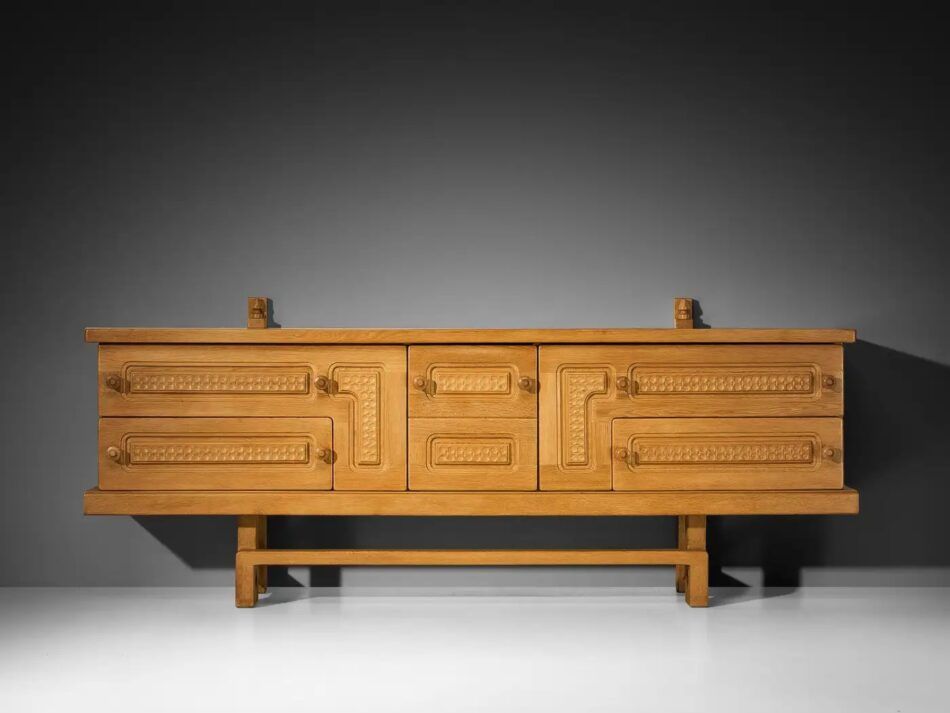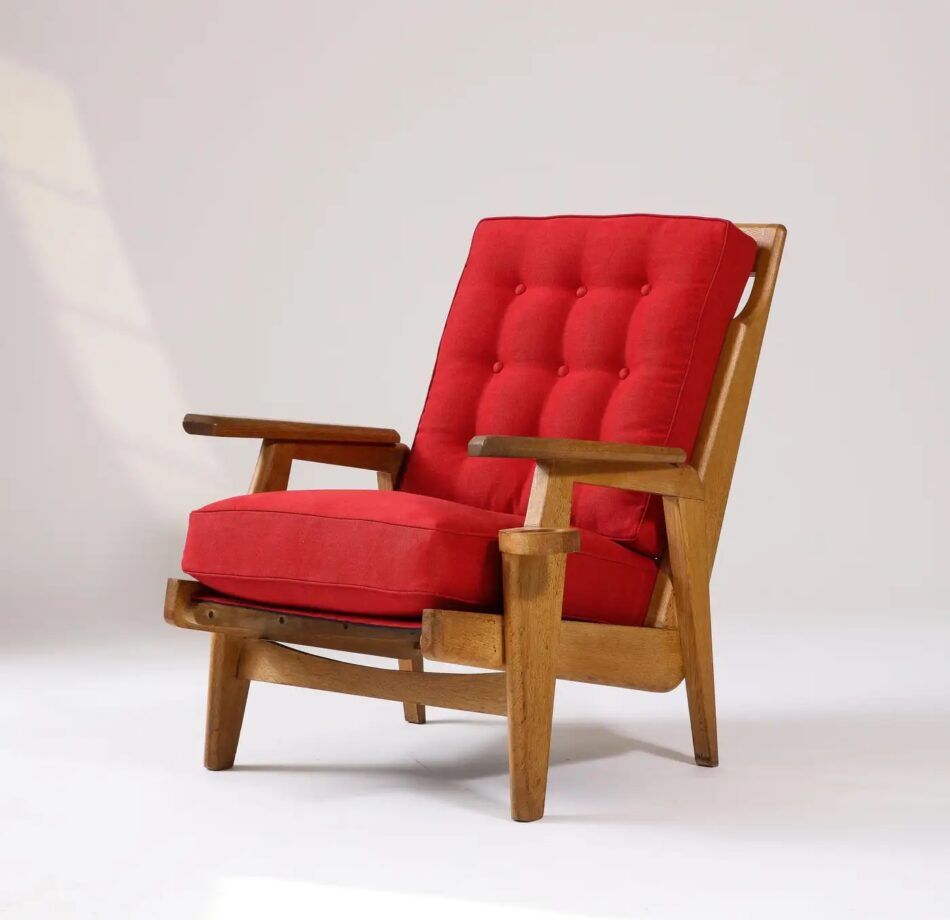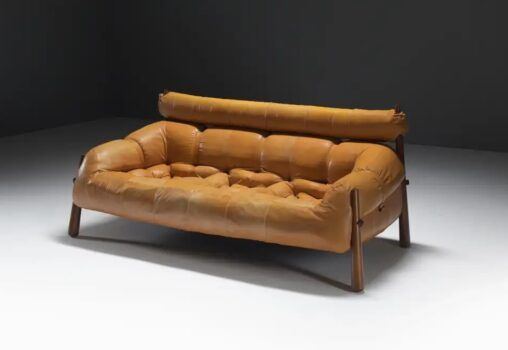
Robert Guillerme (1913–90) and Jacques Chambron (1914–2001), the French creative duo behind mid-20th-century furniture company Votre Maison, met under unusual circumstances: They discussed design while imprisoned in a forced-labor camp. The pair’s combined talents later resulted in modern furniture with distinctive details. Today, Guillerme et Chambron desks, dining tables, chairs and other pieces still look conceptually playful and vibrant and can fit harmoniously into any home.

Guillerme graduated from Paris’s École Boulle in 1934 with a degree in design and architecture, while Chambron studied at the School of Applied Arts in Reims. They were captured by the Germans in East Prussia during the Second World War and struck up a friendship over their mutual love for all things design.

After the war ended, Guillerme moved to Lille, in northern France; Chambron left his job as a painter and decorator in Paris and joined him in 1948. In 1949, the pair met Émile Dariosecq, a skilled cabinetmaker who enthusiastically agreed to manufacture the duo’s designs, leading to the start of Votre Maison.
Guillerme et Chambron were as prolific as they were talented, creating more than 2,000 designs in the second half of the 20th century, which they produced in a former gun factory. Their furniture, which was mostly made in different tones of waxed oak, adhered to the design style that emerged after the war: mid-century modernism.

European furniture in the postwar period largely prioritized function as much as it did form and lacked any unnecessary ornamentation. Guillerme et Chambron wanted people to actually use their furniture, not just look at it. That design philosophy was a pillar of their company: Votre Maison translates to “Your House” in English.


Nevertheless, their work is known for its flourishes. Their signature touches include ornate tiles, hidden drawers and vibrant textiles on pieces like wardrobes, shelving, lighting, benches and other seating. One of Votre Maison’s best-known and most popular designs is the Grand Repos armchair, a stately, high-backed wide piece with a skeletal oak frame, six spindles and plush cushions.

Votre Maison was a full-service design firm, creating interiors as well as furnishings. Although Guillerme et Chambron were a team, they handled different aspects of the business: Guillerme designed much of the furniture, while Chambron concentrated on decor. In 1983, they passed their enterprise on to Chambron’s son, Hervé, a designer and also a graduate of École Boulle. Production continued until the company’s closure, in 2000.

“What strikes me every time I encounter pieces by Guillerme et Chambron is the exceptional craftsmanship and attention to detail in the woodwork,” says Naomi Verbeek, design historian at Netherlands-based furniture dealer Morentz. “Made from beautiful and durable French oak that will last forever, they truly stand the test of time. The quality is undeniable, and there’s something so satisfying about the solid yet refined construction.”

Benoist F. Drut, owner of New York design gallery Maison Gerard, notes that the solid oak construction of their pieces is often underappreciated. “This is likely a factor that leads to their work’s being perceived as austere,” he says. “However, I can assure you that an armchair upholstered in shearling will be glorious in Aspen. Or take a more breathable, organic, summer-weight fabric, and it will be perfect for the beach house in the Hamptons.”

New York–based interior designer Robert Stilin, who also deals in vintage furniture, admires the pair’s balance of aesthetic and practical concerns. “The shape and form of each piece is unique and unusual,” he says. “The designs are generally function-oriented, and the seating is very comfortable.” He also values the pieces’ versatility. “I just find it all good-looking, stylish and easy to mix in.”
Drut agrees that the designs work in a surprising range of settings. “These pieces can be incorporated so easily and always look very elegant and add warmth, resulting in interiors that are cozy and inviting,” he says.

His best advice for arranging them in a room? “Most of the time our clients mix and match periods and styles and sprinkle a couple of Guillerme et Chambron pieces in with the work of other designers. And as I always say, follow your instincts, not any rules — there is no right or wrong way to do it. Stop listening to everyone, trust yourself, and be daring.”





